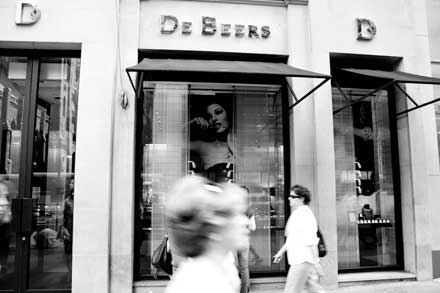The Risk of Not Investing in a Recession
The challenge for managers during a downturn is to find the balance between pursuing too many unprofitable investment opportunities and passing up too many potentially profitable ones.
Editor’s note: In 1993, Pankaj Ghemawat wrote the classic article “The Risk of Not Investing in a Recession,” which addresses a question that every organization now confronts with fresh urgency. But which classic management insights still apply in the new, crisis environment? Do Ghemawat’s? Recently, we asked him. His answers are published here, as commentary annotating the original text.
Reveal Ghemawat’s commentary by clicking on the highlighted passages.

Image courtesy of Flickr user cameronconner.
Two very different ways of thinking about investment and risk are headed for a showdown. One emphasizes the financial risk of investing; the other concerns the competitive risk of not investing. In normal times, the bearishness of the former tends to (or is supposed to) complement the bullishness of the latter. But the balance between the two seems to break down at business-cycle extremes. Specifically, at the bottom of the business cycle, companies seem to overemphasize the financial risk of investing at the expense of the competitive risk of not investing. Once-in-a-cycle errors of this sort can create a lasting competitive disadvantage, which is reason enough to write (and read) an article on the risk of not investing while the economy is still weak.
Risk — Financial and Competitive By risk, I mean what managers mean: failure to achieve satisfactory performance along some dimension. The financial risk of investing is the failure to achieve satisfactory financial returns from an investment. And the competitive risk of not investing is the failure to retain a satisfactory competitive position for lack of investment. Of course, it doesn’t make sense to stamp out either type of risk, even though financial risk could be eliminated by not investing at all and competitive risk could be eliminated by investing indiscriminately. Instead, a balance must be struck between the error of pursuing too many unprofitable investment opportunities as opposed to the error of passing up too many potentially profitable ones.
References
1. R.H. Hayes and D.A. Garvin, “Managing as if Tomorrow Mattered,” Harvard Business Review 60, no. 3 (May-June 1982): 71-79.
2. G. Donaldson and J.W. Lorsch, “Decision Making at the Top: The Shaping of Strategic Direction” (New York: Basic Books, 1983).
3. For additional specifics on how the analysis ought to be conducted, see P. Ghemawat, “Commitment: The Dynamic of Strategy” (New York: Free Press, 1991), especially chaps. 4 and 5.
4. W.M. Cohen and R.C. Levin, “Empirical Studies of Innovation and Market Structure,” in “Handbook of Industrial Organization,” eds. R. Schmalensee and R.D. Willig (Amsterdam: North-Holland, 1989).
5. C.W. Skinner, “Big Hat, No Cattle: Managing Human Resources,” Harvard Business Review 59, no. 5 (September-October 1981): 106-114.
6. See, for example, G. Donaldson, “Voluntary Restructuring: The Case of General Mills,” Journal of Financial Economics 27 (1990): 117-141.
7. P. Ghemawat, “Sustainable Advantage,” Harvard Business Review 64, no. 5 (September-October 1986): 53-58.
